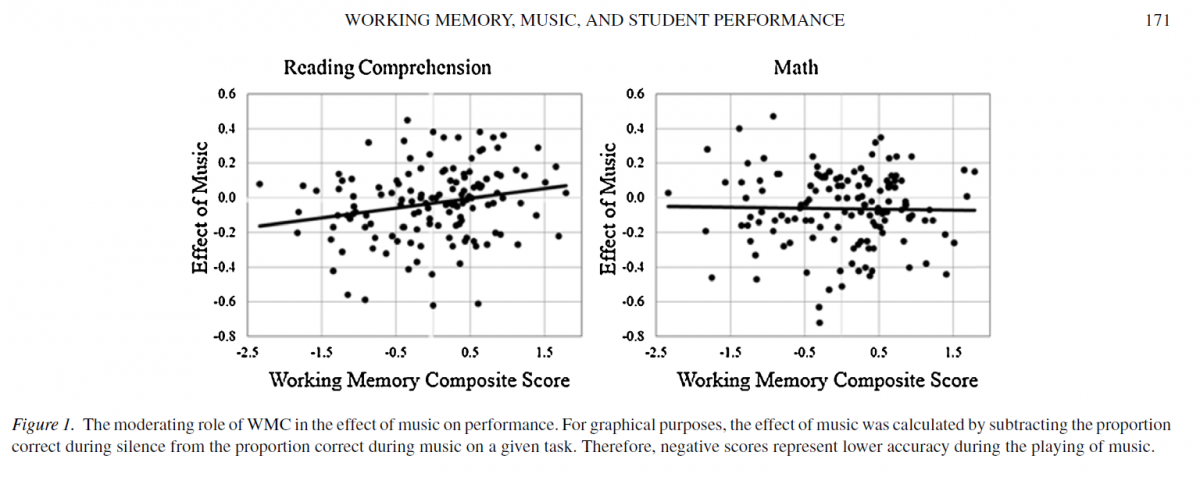In a study conducted by the University of Tennessee, 151 undergraduate students aged 18 to 30 “worked on reading-comprehension and math tasks under both music and silence conditions before completing a battery of working-memory capacity assessments.” (Christopher & Shelton, 2017). Working-memory capacity is “the ability to maintain and manipulate information over a period of seconds - is a core component of higher cognitive functions” (Constantinidis & Klingberg, 2016) and working-memory capacity (WMC) varies depending on the individual. The reading comprehension and math questions were randomly selected from the United States Scholastic Aptitude Test (SAT) practice book. The songs used during the study were randomly selected from the Billboard Top 100 list, they “reasoned that using currently popular music with vocals would be more applicable to the everyday study habits of students and should maximize the distracting effect of the music.” (Christopher & Shelton, 2017).
The 151 students were put into groups of 2-10, “All participants were presented with the arithmetic problems first, followed by the reading-comprehension problems. Approximately half of the participants completed the SAT problems in silence followed by the music condition, and the other participants first completed problems in the music condition followed by a silence condition. Each block of either music or silence lasted for 20 min (10 min per academic task).” (Christopher & Shelton, 2017). After they did the SAT questions they were required to do the WMC tests, the main idea behind WMC tests is to account for individual variances in how the participants are able to stay focused because some people are prone to distraction more than others and that’s one unique factor about this study.
Individual differences make it hard to accurately determine who will benefit or suffer from listening to music, however, “the implication of the present study is that, indeed, some students are correct in their assumption that it is relatively safe for them to listen to music while doing their homework. Specifically, [their] data suggest that individuals who score higher on WMC tests perform reading-comprehension tasks just as well when they are listening to music relative to performing the task in silence. However, individual differences in WMC did not provide a buffer against music-related distraction in math tasks.” (Christopher & Shelton, 2017). In other words, people who are able to focus on tasks without being distracted even with music playing in the background have high WMC scores, and they are able to do equally well in reading comprehension tasks. However, people with high WMC scores performed the same as people with low WMC scores in math. This can be due to the fact that “arithmetic tasks are supported by different cognitive processes than reading-comprehension tasks.” (Christopher & Shelton, 2017).

Overall the verdict of this study suggests that for the general population of “students it would be a mistake to listen to music while working on academically relevant tasks. However, higher-WMC individuals may be less vulnerable to performance deficits traditionally associated with listening to music. Unfortunately, no evidence was revealed to suggest that these individuals know who they are, so many students may listen to music despite the detrimental effects this choice has on their learning.” (Christopher & Shelton, 2017).
Reference:
Constantinidis, C., Klingberg, T. The neuroscience of working memory capacity and training. Nat Rev Neurosci 17, 438–449 (2016). https://doi.org/10.1038/nrn.2016.43
Christopher, E. A., & Shelton, J.T. Individual Differences in Working Memory Predict the Effect of Music on Student Performance. Journal of Applied Research in Memory and Cognition (2017), http://dx.doi.org/10.1016/j.jarmac.2017.01.012
Learning Significance